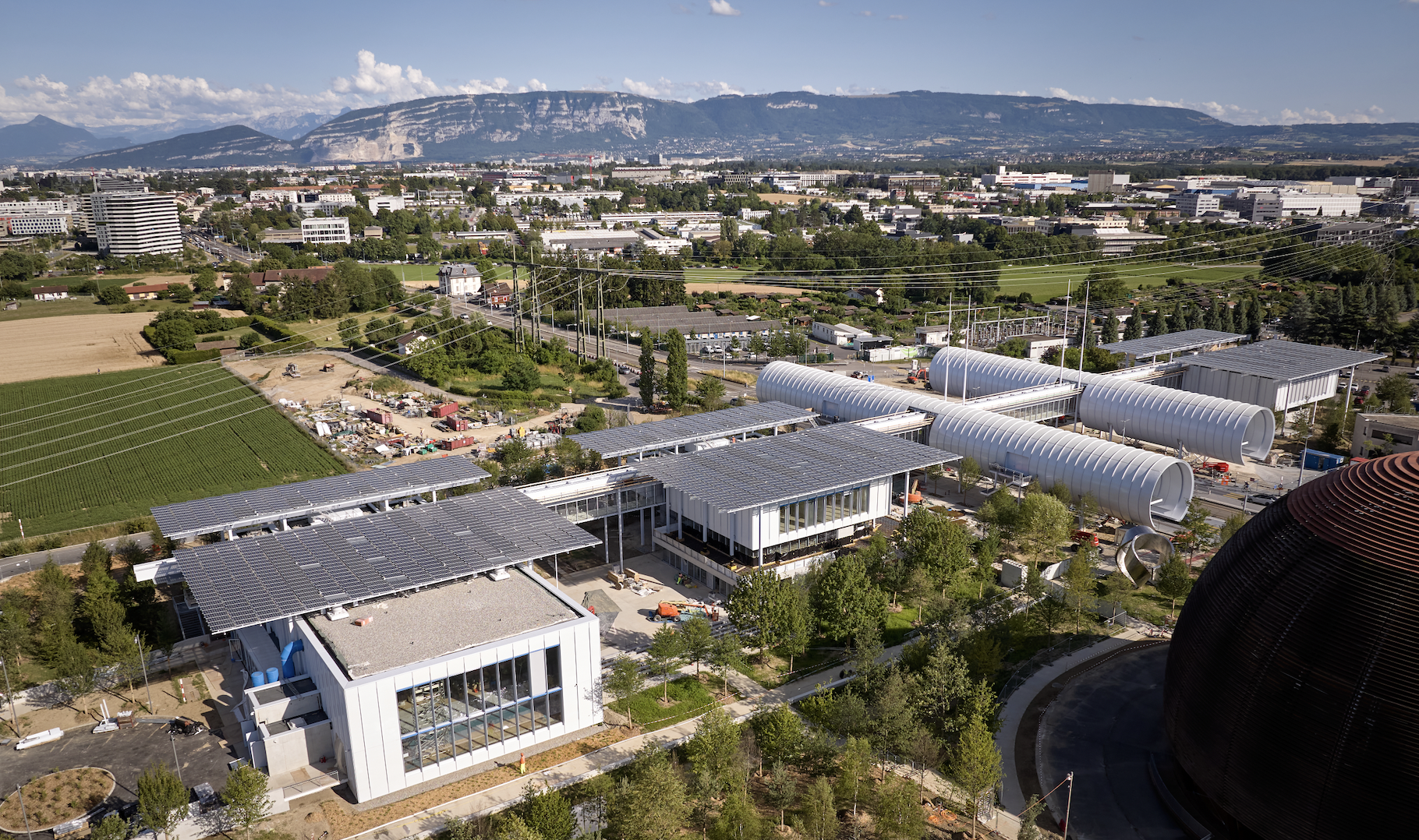Throughout CERN’s almost 70-year history, architecture has been placed at the service of science through iconic structures built on the Laboratory’s sites. As the Science Gateway building – designed by renowned Italian architect Renzo Piano – is nearing completion, we explore how these grand architectural projects have shaped the Organization since its early days.

The original CERN complex, dating from the 1950s and centred around its Main Building, established the Laboratory’s strong architectural identity. The Zurich-based architects in charge of the project, Rudolf and Peter Steiger, sought primarily to tie in with the “international Geneva” architectural movement that, in the aftermath of the Second World War, was injecting a spirit of modernity and renewal into institutions such as the World Health Organization and the International Labour Office by means of monumental, utilitarian and sculptural structures. We find this monumental character in CERN’s Main Building and Building 60, as well as in the experimental halls and neighbouring buildings that the architects sought to harmonise, all linked by an architectural unity emphasising exposed reinforced concrete. In short, the architecture of the original complex reflected the coherence of the Laboratory’s project, in which the services and communities revolved around a unified, communal space.

Over the years, CERN has added other iconic buildings, such as Building 40 with its vast central atrium, completed in 1996, and its extension, Building 42, completed in 2011 and now the seat of the CERN Directorate. Both of these buildings were designed by architect Jacques Perret. In addition, the Globe of Science and Innovation, initially built for the Swiss National Exhibition in 2002 and presented to CERN to mark its 50th anniversary, has since become a symbol of the Organization and the surrounding area.
More recently, the Prévessin site has welcomed some ambitious and environmentally minded architectural projects, such as Building 774, designed by architects Octavio Mestre and Francesco Soppelsa. Inaugurated in 2015, its innovative design includes a façade covered with solar panels based on CERN technology. It sits opposite the new data centre, which will use cutting-edge cooling technologies and recover the thermal energy generated by the computing infrastructure to heat other buildings on the site.
But all eyes are now on Science Gateway, whose inauguration is due to take place in October. Patrick Geeraert, Science Gateway Project Leader, recalls how this vast undertaking began: “When Renzo Piano presented his model to us in 2018, in his Genoa offices, it turned all our plans upside down. The project was as magnificent as it was ambitious.” The proposal would go on to take the form of a structure divided into three pavilions and two imposing tubes connected by a suspended walkway.

The strong symbolism of the two tubes suspended over the road is unmissable: Renzo Piano intended them to mirror the LHC tunnel, located 100 metres below. They will immerse visitors in the world of particle accelerators before they even enter the building. In another nod to the universe of science, the silhouette of Science Gateway seen from above recalls that of a space station that has landed in a forest. With 400 trees planted especially, this forest is another key feature of the project, underlining the close links between science and nature. Lastly, the materials chosen and the overall aesthetic of the building, with its raw forms and exposed concrete, celebrate – rather than try to conceal – CERN’s industrial character.
Five years and one pandemic later, with the support of the ICM and Cimolai consortia, the dream has become a reality and CERN is preparing to open even more to the world thanks to its new centre. Just a few months away from the opening, Patrick Geeraert has plenty to be happy about: “A few years ago, we couldn’t have dreamed of building such a structure in such a short time and without impinging on the CERN Budget. The project has been financed entirely by donations, and I’d like to thank our sponsors once again, as well as all the CERN teams who have helped to make Science Gateway a reality.”
Without a shadow of a doubt, Science Gateway will be much more than just an exhibition centre; it will be a hub where science is brought to life, the scientific community is welcomed and the wellspring of ideas that has characterised CERN for almost 70 years will be nurtured. Grand architectural projects marked the Organization’s early days and will help usher in its future.

